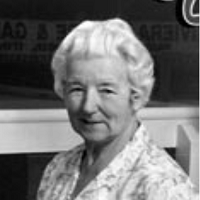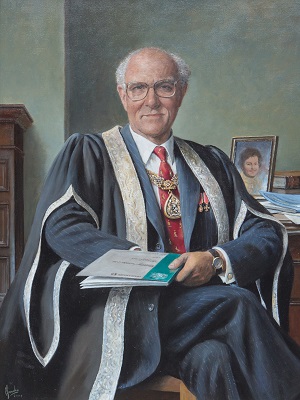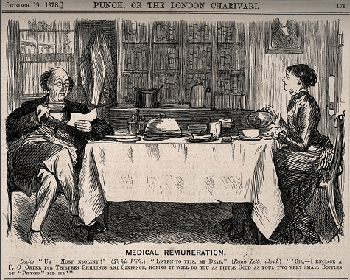Between the late 1800s when medical apprenticeships died out until the introduction of support staff in the 1960s, male doctors relied on their wives to assist with their professional lives and run their family ones. With the family home as the surgery, evening clinics and an expectation to be on call 24/7, there was little demarcation between work and home for the entire family.
Financial incentives from the 1950s and 1960s supported GPs to move into purpose-built group surgeries and health centres, and out of their homes. However, a report in the 1960s estimated that GPs’ wives and relatives still contributed around £5 million through their unpaid work.
“A good many medical women marry after graduation: their husbands are generally medical men, and the wife, as a rule, both practises independently after marriage, and helps her husband.” Elizabeth Garrett Anderson, 1898
“Elizabeth [my wife] answered the phone when I was out, and well she was paid, initially it was 17/144th of the practice, of my income … It continued that way until I retired, actually.” Edward Cockayne, 2019
"Being unmarried, I have often found the “domestic” organization of the practice as difficult as the professional work and I have had many occasions to envy my colleagues the support and assistance they obtain from their wives.” Agnes T. Kennie, 1950s
“If he is here and off duty ... he is hiding in the sitting room ... his car is around the back ... I am sort of doing guard at the door ... that is what I call doing the GP wife act.” GP’s wife, 1960s
Key dates
1953 the Hadfield Survey was published, which found that one in five GPs’ wives “took a considerable part in the administration of the practice”
1965 the Family Doctors’ Charter led to major changes in reimbursements and expenditure allowances, including for ancillary practice staff
1975 the Sex Discrimination Act protected men and women from discrimination on the grounds of sex or marital status
2004 changes to GP contracts meant the end of most doctors undertaking their own ‘out of hours’ calls
People
Find out more about individual women’s experiences by clicking to expand.

Agnes “Nan” Kennie (1909-2009) bought a general practice in Paignton, Devon in 1948, which she ran single-handed for 16 years before returning to her native Scotland to work in geriatric medicine in Glasgow. She was a founder member of the College, appointed a fellow in 1959, made a fellow of the BMA in 1964, and received an MBE in 1989.
Unmarried herself, Dr Kennie carried out a significant study into the role of doctors’ wives in the early 1960s. Although the stereotypical burden was beginning to lift, Kennie’s interviews revealed that wives frequently knew more about the practice’s organisation than their husbands, often having built it up together. She also noted the extreme difficulty of keeping work and home lives distinct, even though many wives aimed at this separation for their husband’s and wider family’s well-being.
She reported patients delivering bottles of urine into a doctor’s wife’s kitchen, GPs taking up sailing or golf to escape the telephone, and wives worried about the impact on their children of erratic meals, and fathers absent from school events. Kennie concluded that GPs’ wives were often the most neglected patients in the community. One GP informed her in a stage whisper “to tell you the truth I couldn’t run the practice without her, but for goodness' sake don’t tell her so”.

In this portrait commissioned to mark Sir Denis Pereira Gray’s College presidency (1987-1990), his wife Jill (1937-2020) features prominently in the photograph on the table. She worked closely with Sir Denis, particularly as his Assistant Editor on the British Journal of General Practice for 5 years.
Jill was also keen to explore the role of the doctor’s wife, clearly drawing on her own experiences. At the World Conference on Family Medicine in 1978, she chaired a session with a panel of doctors’ wives followed by a “lively discussion” particularly emphasising the need for doctors and their families to recognise health and other problems in their own families early. In a later article, she reflected that doctors and their families face specific challenges including issues around confidentiality, the constant stress of the telephone, and the pressure on GPs’ wives, particularly in a single-handed practice. She proposed a number of practical solutions, including the potential for doctor’s wives to attend training if required, to forearm them for potential issues. She also recognised the additional pressures on women doctors who were also doctors’ wives and mothers.
Photo: Professor Sir Denis John Pereira Gray, Carlos Luis Sancha, 2000. Credit: RCGP collection Tamás Kolóti Photography.
Stories
Medical remuneration

Although this cartoon was produced to satirise medicines in the late 1870s, it also provides us with a rare image of a Victorian doctor’s wife. Her role, pouring tea and offering a listening ear to her husband, would have been recognisable to Punch’s readers. At a time when very few women were able to qualify as doctors, the doctor’s wife often played a vital part in her husband’s professional success.
Image: Punch, 19 October 1878 Credit: Wellcome Collection.
Lines for a waiting room
If you saved your doctor's life
And win approval from his wife,
You'll try to ring 'tween nine and ten,
For everyone is ready then
To take the calls and plan the day
To let the doctor get away
The routine calls that come in late
Would really make a saint irate
Back on their tracks the doctors go
To no good purpose they can show
Emergencies? They do not mind,
But other calls – it is unkind
To ring the doctor during lunch
Because you've had a sudden hunch
That Tommy's tonic's running dry;
Or Joan's depressed and tends to cry.
Some patients ring in a mad flurry
And doctors rush off in a hurry.
They should have said “Will he please call,
There's no emergency at all.”
Your doctor – just like you and me -
Prefers to sit when having tea;
He hates to hear the phone at meals,
Why you know – I know how he feels.
And when at last he gets to bed
To rest his weary bones and head,
Who know, he may not even stay
In peace until the dawn of day.
The average life of the G.P.
Is shortening, as no doubt you'll see
If the statistics you should read,
His prospects now are grim indeed
So do prolong your doctor's life
Don't make a widow of his wife.
Mrs Forbes, 1960s
When historian Mary Ann Elston interviewed older doctors’ wives for her research in 1983, she found their roles included clerical work, tidying the surgery, washing bottles, towels and sheets, paying the bills and dealing with supplies. Some wives ran the infant welfare clinic, while others typed up research work. All dealt with the challenge of acting as a bridge or barrier between patients and their husband, whilst maintaining emotional neutrality.
Mrs Forbes showed Elston around the purpose-built extension to the house where her husband had originally practiced single-handed. The current practice manager estimated that 13 people were now doing the work that Mrs Forbes used to undertake.
Voices
Listen as Sally Hull reflects on the impact on her children, and Rosemary Ford describes her experience as a GP’s wife.
Transcripts

Discover the exhibition
Find out more about the history of women in general practice by visiting our Women in GP exhibition.
Thank you for your feedback. Your response will help improve this page.
